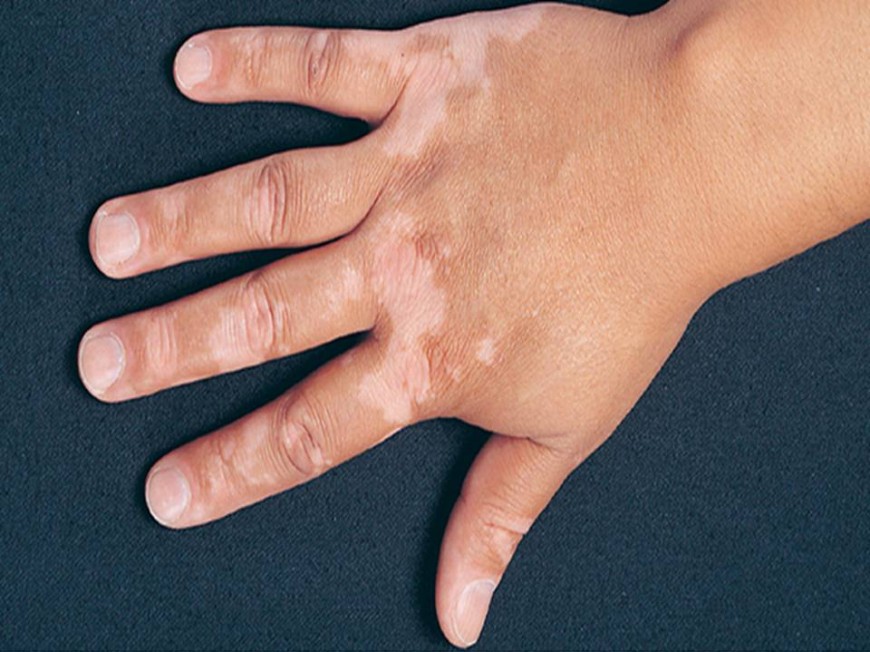Vitiligo or Leucoderma or White Patches is a chronic skin condition where white patches develop on the skin due to loss of pigment from affected areas of the skin. Vitiligo is thought to be due to an autoimmune disease. It appears to occur when the body’s immune system attacks and destroys the cells that produce brown pigment known as melanocytes — leaving the affected area of skin void of color. Vitiligo most often affects the face, elbows, knees, genitals, hands and feet, and the condition is more noticeable in people with darker skin tones because of the contrast of white patches against dark skin.
Vitiligo may appear at any age. There is an increased rate of the condition in some families. There are usually no other symptoms. In some cases the pigment can be restored with medical treatment & phototherapy without surgery. Also the affected area can be covered by skin camouflage creams& colors. Though vitiligo does not cause any problem to health, but its appearance is a taboo or stigma for our society.
Causes of Vitiligo
Exact cause of Vitiligo is not known but doctors and researchers have some different theories such as-
- People with vitiligo inherit a group of 3 genes that make them susceptible to vitiligo.
- Vitiligo could be an autoimmune disease.
- Vitiligo can be hereditary.
- Vitiligo can either occur due to a disturbance in the formation of melanin or in its loss from the skin.
- Complete loss of melanocytes can also be seen in vitiligo lesions.
Treatment at Kutiz
Treatments for vitiligo at Kutiz include topical medications, light therapy that can be used in combination to restore pigment and a few require the patient to be exposed to a controlled dose of ultraviolet (UV) light. Also now, newer surgical techniques are being introduced that have shown to have a high success rate in restoring pigment to the affected areas. These therapies need to be administered carefully by a dermatologist to ensure the patient is treated safely and monitored for skin cancer. Also these techniques are successful in more than 90% cases.
Light therapies includes-
PUVA (Psoralen + UVA) Therapy
- PUVA is a light therapy which is used when less than 20 percent of the skin surface is affected by vitiligo.
- In this therapy, UVA light is used with the topical medication psoralen, which is applied to areas of vitiligo prior to light treatment, it then sensitizes the skin to the UVA light, and therefore the light treatment works specifically on areas of the skin affected by vitiligo.
- This treatment can be administered by different ways, but only a small dose of UVA is delivered to the skin.
- PUVA treatments are administered weekly for up to six months to get best results.
- Most patients get to see a 50 to 55 percent improvement in four to six months.
- Maintenance therapy may be required with either additional PUVA treatments or in combination with topical medications.
Narrowband UVB
- Narrowband UVB is the light therapy which is used in vitiligo patients with more extensive disease or in cases where more than 20 percent of the skin surface is affected by vitiligo.
- A specific wavelength (311 nanometers) is administered to the entire surface of the skin to treat areas of vitiligo.
- On average, patients will experience a 60 to 65 percent improvement after 12 to 18 months of therapy.
Surgery- Blister grafting
Surgery may be an option for you if light therapy (PUVA & Narrowband UVB)
doesn’t work.
Blister grafting. It is the procedure where your doctor creates blisters on your pigmented skin, usually with suction & then removes the tops of the blisters and transplants them to an area of discolored skin.

